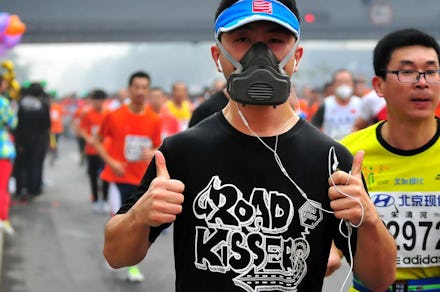What It's Like Trying to Run a Marathon in a Sea of Hazardous Pollution

Running a marathon is grueling. Each year, thousands of runners spend months training their bodies to withstand the stress of the 26.2 mile endurance race. Even for the most experience runners, marathons come with physical risks: According to physiologists, a marathon can inflict high levels of stress on your cardiorespiratory, endocrine and neuromuscular systems. Abnormal weather conditions on race day can also put runners at risk of long-term health problems.
The level of small pollutant particles known as PM 2.5, which can embed themselves deep in the lungs, reached "more than 400 micrograms per cubic meter in parts of Beijing as the racers lined up," Al Jazeera America reports. The U.S. Embassy categorized the air as "hazardous."
Many top long-distance athletes stayed away from the race, while those who participated donned masks to protect their lungs from the thick smog. Organizers made 140,000 water-soaked sponges to available athletes, advising runners to scrub down their skin after it was "exposed to the air," the Beijing News reported.
"I was basically a vacuum cleaner," William Liu, a 30-year-old banker, told Bloomberg News.